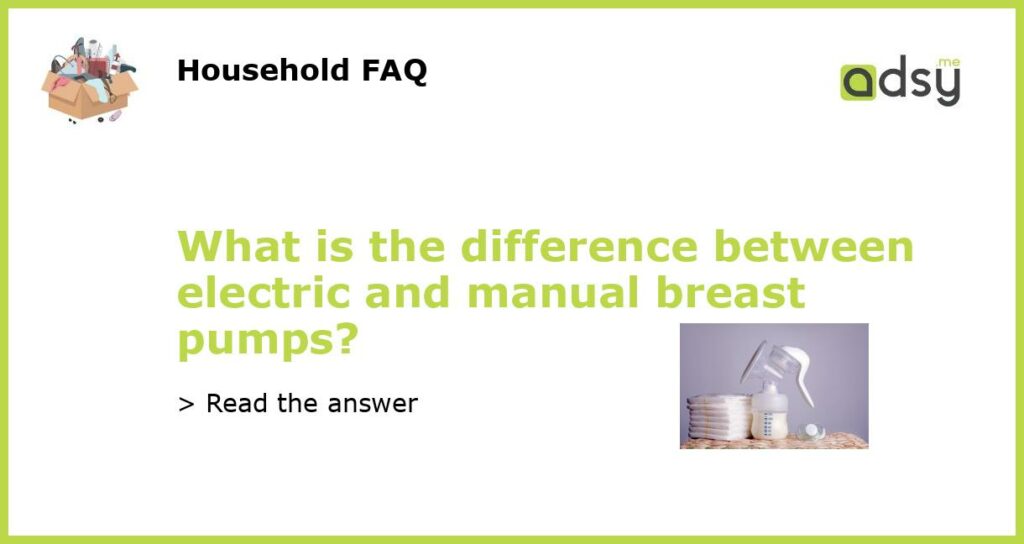Understanding the Difference Between Electric and Manual Breast Pumps
Breastfeeding is one of the most natural things a mother can do for her child. Not only does breast milk provide all the necessary nutrients for a baby, but it can also boost their immune system and offer other benefits. However, breastfeeding can be challenging, especially for working and busy moms. This is where breast pumps come in. They allow mothers to express breast milk, which can then be stored and given to the baby later. Breast pumps come in two main types: electric and manual. In this article, we’ll explain the difference between these two types.
Electric Breast Pumps: Pros and Cons
Electric breast pumps are powered by electricity or batteries. They are designed to mimic a baby’s suction and can pump milk more efficiently than manual pumps. They come with different settings and can be adjusted for speed and suction strength. Electric pumps are ideal for working moms who have to express milk frequently or those who have low milk supply. The downside to electric pumps is that they can be noisy and bulky, making them less portable than manual pumps. They are also more expensive, and some models can be complicated to use.
Manual Breast Pumps: Pros and Cons
Manual breast pumps, on the other hand, are handheld and require the mother to do the pumping manually. They are smaller, more discreet, and can be used anywhere, making them ideal for traveling or pumping on the go. They are also more affordable than electric pumps. Manual pumps are great for moms who only need to pump occasionally or have a good milk supply. However, they require more effort and can be tiring to use regularly. They also do not offer the same suction power as electric pumps, which can lead to less milk expression.
Factors to Consider When Choosing a Breast Pump
When choosing a breast pump, there are several factors to consider. First, consider your pumping needs. If you’ll be pumping frequently, an electric pump may be a better choice. Second, consider your budget. Electric pumps are generally more expensive than manual pumps, but they offer more features and suction power. Third, consider portability. If you’ll be traveling with your pump or need to pump on the go, a manual pump may be more convenient. Finally, consider comfort. Breastfeeding should not be painful, and a pump that causes discomfort or pain should be avoided.
Both electric and manual breast pumps have their pros and cons. The decision on which one to choose depends on your individual needs and preferences. Electric pumps are more efficient but expensive and less portable. Manual pumps are affordable, portable, but require more effort to use regularly. Whichever type you choose, make sure to choose a pump that is comfortable and meets your pumping needs.






